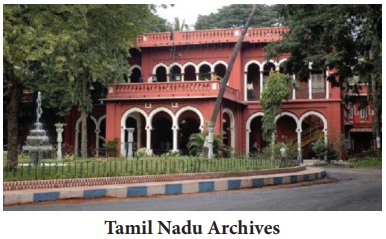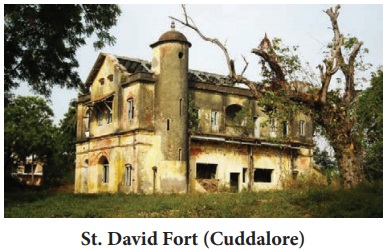Advent of the Europeans | Chapter 1 | History | 8th Social Science - Sources of Modern India | 8th Social Science : History : Chapter 1 : Advent of the Europeans
Chapter: 8th Social Science : History : Chapter 1 : Advent of the Europeans
Sources of Modern India
Sources of Modern India
The sources for the history of
modern India help us to know the political, socio-economic and cultural
developments in the country. From the very beginning, the Portuguese, the
Dutch, the French, the Danes, and the English recorded their official
transactions in India on state papers. Well preserved records are very valuable
to know about their relations in India. The archives at Lisbon, Goa,
Pondicherry and Madras were literally store houses of precious historical
informations. All these sources must, however, be critically evaluated before
they are used for historical writing.
Kinds of Sources
We can write history with the help
of sources like written sources and material sources.
Written Sources
After the advent of the printing press,
numerous books were published in different languages. Hence, people began to
acquire knowledge easily in the fields like art, literature, history and
science. The Europeans came to know about the immense Wealth of India from the
accounts of Marco Polo and similar sources. The wealth of India attracted
Europeans to this country. Ananda Rangam is a name to conjure with in the
annals of Tamil history. He was a Dubash (Translator) in Pondicherry to assist
French trade in India. He recorded the events that took place in French India.
His diaries contain the daily events from 1736 to 1760, which are the only
written secular record available during that period. His diaries reveal his
profound capacity for political judgement, and is a most valuable source of
history. Written sources include Literatures, Travel Accounts, Diaries, Auto
Biographies, Pamphlets, Government Documents and Manuscripts.

Archives
This is the place where historical
documents are preserved. The National Archives of India (NAI) is located in New
Delhi. It is the chief storehouse of the records of the government of India. It
has main source of information for understanding past administrative machinery
as well as a guide to the present and future generations related to all
matters. It contains authentic evidence for knowing the political, social,
economic, cultural and scientific life and activities of the people of India.
It is one of the largest Archives in Asia.
George William Forrest
can rightly be called as the "Father
of National Archives of India".
Tamil Nadu Archives
The Madras Record Office, presently
known as Tamil Nadu Archives (TNA) is located in Chennai. It is one of the
oldest and largest document repositories in Southern India. The most of the records
in the Tamil Nadu archives are in English. The collections include series of
administrative records in Dutch, Danish, Persian and Marathi. Few documents are
in French, Portuguese, Tamil and Urdu.

Tamil Nadu Archives has 1642 volumes
of Dutch records which relate to Cochin and Coromandal coast. These records
cover the period from 1657 – 1845. The Danian records cover the period from
1777 – 1845. Dodwell prepared with great effort and the first issue of the
calendar of Madras records was published in 1917. He was highly interested in
encouraging historical researches. He opened a new chapter in the History of
Tamil Nadu Archives.
Material Sources

Many paintings and statues are the
main sources of modern Indian history. They give us a lot of information and
the achievement of national leaders and historical personalities. Historical
buildings like St. Francis Church at Cochin, St. Louis Fort at Pondicherry, St.
George Fort in Madras, St. David Fort in Cuddalore, India Gate, Parliament
House, President House in New Delhi, etc are different styles and techniques of
Indian architecture. Other objects and materials of religious, cultural and
historical value are collected and preserved in Museums. These museums help to
preserve and promote our cultural heritage. The national museum in Delhi is the
largest museum in India which was established in 1949.
Coins are a good source to know
about administrative history. The first coinage in modern India under the crown
was issued in 1862. Edward VII ascended after Queen Victoria and the coins
issued by him bore his model. The Reserve Bank of India was formally set up in
1935 and was empowered to issue Government of India notes. The first paper
currency issued by RBI in January 1938 was 5 rupee notes bearing the portrait
of King George VI.
In 1690, Fort St.
David was built by the British in Cuddalore.
Related Topics